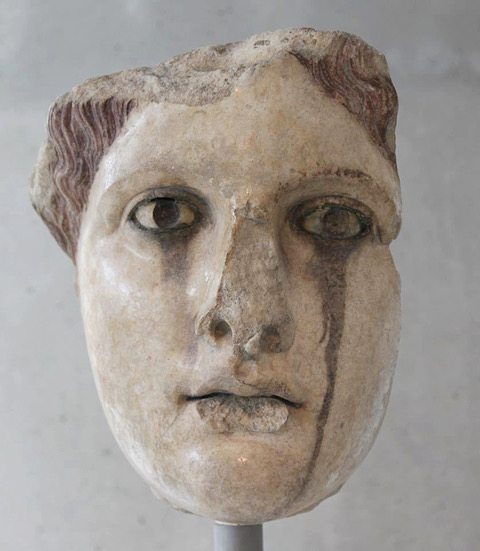Vol. 5 (2020): CLARA Special issue: Perceiving Matter. Visual, Material and Sensual Communication from Antiquity to the Middle Ages and Beyond

The twenty-first century has witnessed a growing interest in antique and medieval polychromy. By now it is generally acknowledged that colour is an integral part of their sculpture. In the present special issue of CLARA, scholars from various disciplines explore different aspects of sculptural polychromy in marble, glass, stucco, wood and terracotta – from Antiquity to the Renaissance: The multisensory perception of colour, the interplay of colour and texture, the treatment of sculpted surfaces, the importance of gilding and polishes, and the challenges when reconstructing lost polychromy. Combining empirical and theoretical data, the special issue includes hitherto unpublished colour reconstructions and scientific details.
Photo: Female head. Parian marble. Found in Athens, in the Odeion of Herodes Atticus. It comes from an acrolithic statue of a goddess. The inlaid eyes were made of ivory, the irises were made of dark stone and the eyelashes of metal. The hair was painted in red colour. Copy of an original work of the 5th or 4th century BC. 2nd century AD.
This collection of articles is the result of a seminar with the title Perceiving Matter: Visual, Material and Sensual Communication from Antiquity to the –Middle Ages and Beyond, held April 5th 2019 at the Museum of Cultural History (MCH), University of Oslo. The seminar was arranged by Marina Prusac-Lindhagen and Kaja Kollandsrud and established the research group ‘Polychrome Art History’ https://www.khm.uio.no/english/research/research-groups/polychrome-art-history/


